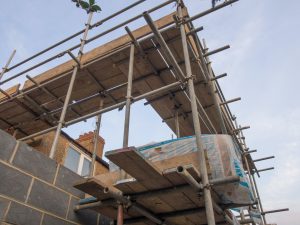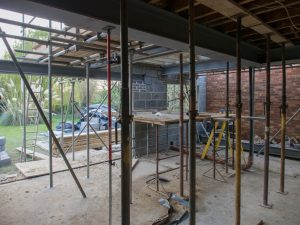Whether you’re a property owner, builder, or subcontractor, understanding the VAT rates for building work is crucial. With different VAT rates for new builds, renovations, conversions, and alterations for disabled people, it can be challenging to keep track of what’s what. Most work on houses and flats by builders and similar trades are charged at the standard rate of 20%, but there are some exceptions.
In this blog article, we’ll guide you through the different VAT rates and circumstances where they apply, helping you to budget accordingly and avoid any legal or financial consequences.
Renovating Residential Property that has been Empty for More than 2 Years
One of the circumstances where building work can be charged at 5% VAT is when you are renovating residential property that has been empty for more than 2 years. This is to encourage property owners to bring empty properties back into use.
Where the Number of Dwellings is being Increased
Another situation where a reduced VAT rate of 5% can be applied is where the number of dwellings is being increased. This could include converting a house into flats, which is a popular way to maximise the use of a property and increase its value.
Converting a Commercial Building into Residential
Converting a commercial building into residential is another circumstance where the reduced VAT rate of 5% can be applied. This could include converting an office building into apartments or a hotel into residential units.
Converting a House into an HMO
Finally, converting a house into a House in Multiple Occupation (HMO) is another situation where the reduced VAT rate of 5% can be applied. HMOs are a popular way to increase the rental yield on a property and are often used by landlords to accommodate students or young professionals.
When a Certificate is Needed
While the above circumstances allow for a reduced VAT rate of 5%, there are some exceptions where a certificate is needed. For example, a reduced rate certificate would be needed for a home or other institution providing residential accommodation for children, a hospice, or residential accommodation for members of any of the armed forces. In these cases, the builder or developer would need to determine whether and on what the 5% VAT rate can be applied.
Building a New House or Flat
Value-added tax, or VAT, is an essential factor to consider when carrying out building work. New builds are zero-rated for VAT, which means that builders and subcontractors must not charge VAT on any labour-only or supply and fix contracts. However, they will still have to pay VAT when purchasing materials, but can claim it back at the end of each month.
Conversions and renovations have different VAT rates. Conversions have a zero-rated labour charge, and a 20% VAT rate for materials, which can be reclaimed. Meanwhile, renovations have a 20% VAT rate for both labour and materials, except for properties occupied for two years or more, which can benefit from a 5% VAT rate on materials and labour when a VAT registered builder is used.

However, this 5% VAT is not recoverable. For properties unoccupied for 10 years or more, the VAT rate is the same as for conversions.
Overall, understanding the VAT rates for building work is crucial for property owners, builders, and subcontractors alike. It is essential to ensure compliance with HMRC rules to avoid any legal or financial consequences.
By knowing the specific VAT rates for different types of building work, property owners can budget accordingly, while builders and subcontractors can plan their expenses and VAT claims effectively.
Carrying Out Building and Related Work for Disabled People
If you’re a builder or contractor working on alterations or equipment for a disabled person’s home, you may be able to zero-rate VAT on certain goods and services.
This includes building ramps, widening doorways, installing bathroom adaptations, and supplying equipment such as adjustable beds, hoists, and lifts. However, you must ensure that your customer is eligible for zero-rate VAT and keep records to prove it.
To qualify for zero-rate VAT, your customer must have a physical or mental impairment that significantly affects their ability to do everyday activities or be treated for a chronic sickness. Temporary disabilities or elderly frailty do not qualify, but you may be able to charge reduced-rate VAT on certain goods and services for people over 60.

Additionally, if you’re supplying equipment for personal use in hospitals or nursing homes, there are different rules to follow.
To prove your customer’s eligibility for zero-rate VAT, you’ll need a separate declaration signed by them or a responsible person such as a doctor or guardian. This declaration must contain information that shows they’re eligible and must be separate from any order form or invoice.
By following these rules and understanding the different categories, you can help disabled customers make necessary modifications to their homes without incurring unnecessary VAT costs.
Conclusion
Whether you’re renovating an empty property, increasing the number of dwellings, converting a commercial building into residential, or carrying out building work for disabled people, it’s essential to understand the specific VAT rates that apply.
By following the rules and keeping the necessary records, you can ensure compliance with HMRC regulations and avoid any legal or financial issues.
So, whether you’re a property owner, builder, or subcontractor, make sure you’re up to speed with the VAT rates for building work to keep your project on track and your finances in order.







